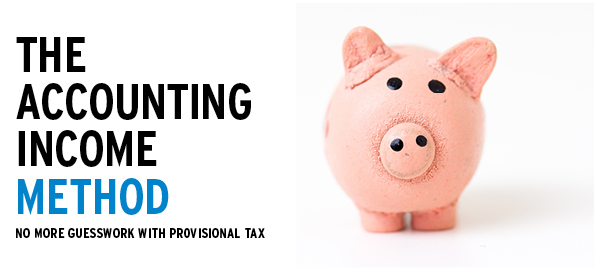
21 June 2017
Many business owners find calculating and paying provisional tax one of the most difficult areas of compliance. So any opportunity to simplify this has to be welcome.
The accounting income method is a grand name for a simple but smart change. It allows you to use your accounting software to calculate and pay your provisional tax, taking the guesswork out of the process. If that sounds a lot like how you calculate PAYE, that’s because it is. Although these changes don’t take effect until April 2018, now is a good time to start planning for them. We’ll look deeper into this in future issues, so watch this space.
Other business-friendly measures include reducing or removing UOMI for the vast majority of business taxpayers. In the past UOMI has been seen as unfair, because even if a business paid the correct amount of provisional tax during the year it could still incur the interest. As of April 1 this year, this charge is considerably reduced through the extension of the safe harbour rules.
In addition, there are new rates for UOMI. As from 8 May, they have changed to:
- Underpayments – 8.22% (down from 8.27%). That’s what you pay on money you owe to IRD.
- Overpayments – 1.02% (down from 1.62%). That’s what IRD pays you on money it owes to you.
The rates are reviewed regularly to reflect market interest rates.
The combination of the accounting income method and the other provisional tax changes will reduce the impact UOMI has on small businesses. The changes also remove the one per cent incremental late payment penalty for new GST, income tax, and overpaid Working for Families tax credits.
If you’d like more information about these changes, or how they could benefit you, get in touch with us and we’ll be happy to talk you through them.
More Articles
-
Annual Closedowns - What Does This Mean For Your Employees?
5 December 2023 As we approach the festive season, you may be starting to plan how your business...
-
Trust Tax Rate Increase
19 May 2023 NZ Budget 2023. From Koller & Hassall’s point of view, the most notable item from...
-
The key to succession planning success
So you’ve created your company from nothing, put years of blood, sweat and tears into its success, and...
-
Work. Sleep. Eat. Repeat.
Working harder is not always smarter. Burnout is common among business owners and staff who are...
-
Building trust through your branding
When it comes to the public perception of your business, creating a brand that resonates with the...